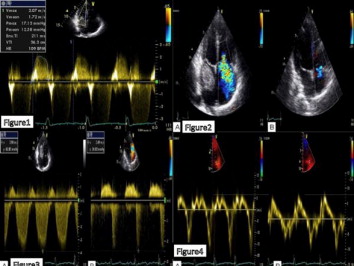Myxoma is the most common primary tumor of the heart in adults. It is originated from mesenchymal cells of the septal endocardium, typically pedunculated with a stalk generally attaches to the fossa ovalis region of the interatrial septum. commonly located in the left atrium as in our case. Herein we presented a case with left atrial myxoma complaining fever, leg swelling and dispne especially while sitting in upright position. Echocardiography showed mobile ball-like mass protruding to left ventricle from left atrium at late diastole nearly ocluding the mitral orifice. Myxoma created severe mitral valve gradient. Color Doppler showed moderate tricuspid regurgitation and pulmoner hypertension (SPAB: 65 mmHg). Patient was operated for myxoma. Echocardiography which was done at postoperative control 3 months later revealed mild tricuspid regugitation and improvement of the right ventricle function. Patient leg swelling and dispne complaints were also disappeared.
Right ventricular (RV) function is a strong independent predictor of outcome of patients with pulmonary hypertension. The RV has an ability to resist a damage and recover function which may be related to unique anatomic, physiologic, and genetic factors that differentiate it from the left ventricle. Early diagnosis of RV dysfunction will be better management of the RV recovery and will improve patient outcomes.





